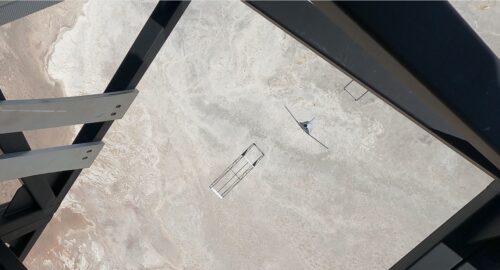In a bid to bolster its standoff defense capabilities, Japan’s Defense Ministry is contemplating equipping C-2 transport planes of the Japan Air Self-Defense Force with long-range missiles, as reported in a recent government announcement. The addition of these missiles could significantly improve Japan’s ability to conduct counterstrike operations by targeting enemy bases, including missile launch sites, from a safer distance.

Title: Japan Explores Enhancing Standoff Defense Capabilities with C-2 Transport Planes
In a bid to bolster its standoff defense capabilities, Japan’s Defense Ministry is contemplating equipping C-2 transport planes of the Air Self-Defense Force with long-range missiles, as reported in a recent government announcement. The addition of these missiles could significantly improve Japan’s ability to conduct counterstrike operations by targeting enemy bases, including missile launch sites, from a safer distance.
The Defense Ministry is considering employing a specific type of missile that ignites its engine in mid-air after being dropped during flight. This technology would require minimal modifications to the aircraft, and the United States is also actively developing related missile technology.
The initial funding of $25 million for related expenses was secured in the fiscal 2023 budget, and full-scale development is projected to begin after comprehensive technical research until fiscal 2024.
It’s worth noting that Japan is not planning to develop or acquire new missiles explicitly for the C-2 planes. Instead, potential candidates for adoption are the U.S.-made Joint Air-to-Surface Standoff Missile (JASSM) with a range of approximately 900 kilometers, which is also set to be introduced for F-15 fighter jets, and an aircraft-launched version of the Type 12 surface-to-ship guided missile currently under development, with a range of 1,000 kilometers.
The significance of this enhancement lies in the concept of standoff defense operations. Japan’s Ground Self-Defense Forces’ ground launchers, Maritime Self-Defense Forces’ destroyers, and Air Self-Defense Forces’ fighter jets are already equipped to target invading forces from a distance. However, the C-2 aircraft stands out due to its capacity to carry more missiles than most fighters and stay airborne for extended periods.
With the ability to transport up to 110 people and cover a distance of approximately 7,600 kilometers with 20 tons of cargo, the C-2 has proven to be a versatile asset in Japan’s defense capabilities. Currently, around 15 of these aircraft are deployed across the country.
The move to increase the means of interception is expected to heighten the challenges faced by potential adversaries when contemplating an invasion. In line with Japan’s new Defense Buildup Program released last year, which emphasized the need to “further diversify launch platforms,” the exploration of mounting missiles on transport aircraft aligns with the nation’s strategic defense objectives.
In a separate development, the United States Air Force has been exploring the Rapid Dragon system, a palletized munitions experimentation campaign. This initiative aims to investigate the feasibility and operational advantages of airdropping long-range palletized munitions from existing airlift platforms such as the C-130 and C-17 without requiring extensive aircraft modifications. The Rapid Dragon system effectively transforms cargo aircraft into weapons carriers that can deploy cruise missiles and potentially other standoff or self-defense weapons by releasing them on pallets via the rear cargo ramps.
The system’s flexible design allows cargo aircraft to operate as bombers, increasing their ability to conduct various operations, including remote deployments, without needing a specialized bomber aircraft. While the focus of Rapid Dragon has primarily been on enhancing conventional capabilities, the potential implications for future nuclear arms limitation talks and the evolving dynamics of global and regional military balances remain areas of interest for strategic analysts.
As both Japan and the United States explore ways to enhance their defense capabilities with innovative technologies like equipping transport planes with missiles (in the case of Japan) and the development of the Rapid Dragon system (by the United States), the evolving nature of modern warfare and the importance of adaptable strategies come to the forefront of discussions. These advancements signify how military forces are continually adapting to new challenges, seeking to maintain a strong deterrent and safeguard national security interests in an ever-changing global landscape.
For more information, hit the Source below